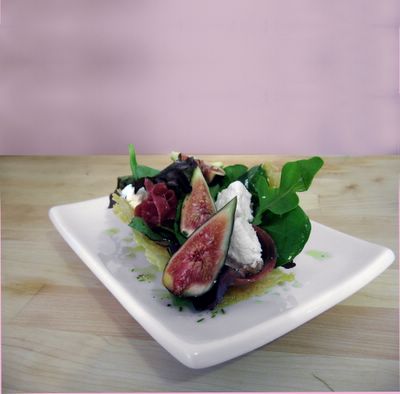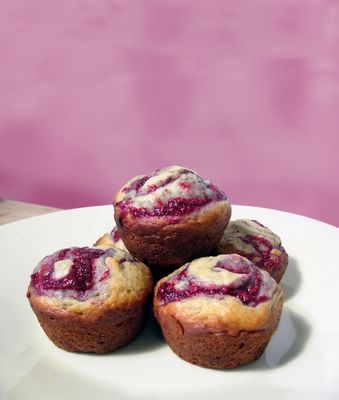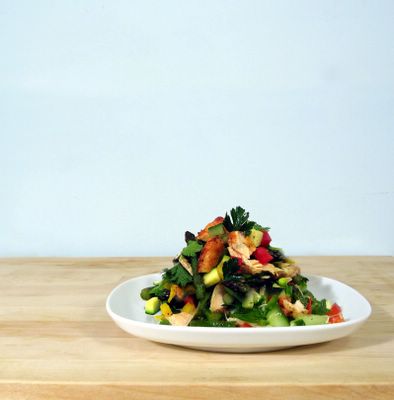Soul food
 Wednesday, May 11, 2005 at 8:02PM
Wednesday, May 11, 2005 at 8:02PM I’m going away on business for a few days, attending an industry conference. A few of our meals have been “sponsored” by various companies with which we collaborate — with each sponsor selecting the restaurant, and in some cases the menu, the group will experience.
Mulling over the list of events, I became naturally curious about those chosen. While searching for websites and reviews, I was struck by the diversity of venues that had been selected. They ran the spectrum, in terms of atmosphere, clientele and, of course, cuisine.
This range had me thinking. I started trying to find the connection between the company who sponsored the event, and the location they chose. In most cases, it seemed the companies had not only considered the reputation of the restaurant, but also how that reputation, clientele and cuisine would reflect and reinforce their own image. The deliberation behind the choices was evident.
So does this translate into our personal choice in establishments and into our own kitchens?
On a personal level, I think the same criteria rings true, but in a much more subconscious form. I think we’re all aware of the emotional connection we have with food; how we eat reflects our mental state, how we celebrate and how we placate.
More specifically though, the food we consider “home”, the food that resonates with us, are the specific dishes to which we feel some sort of connection. We respond to those flavours on a visceral level; the catalyst may be nostalgia, or simply an ingredient that seems to speak to an aspect of our personality.
When we choose to serve or share these meals to others we are, in effect, choosing the part of ourselves to present to them.
So what does all this rambling have to do with what I’m making for dinner? Well, I am making a bit of a special meal tonight (in honour of my little trip), to be shared with the person I adore most in the world.
Since I’d been thinking about the personality of our food, I took a long look at what I was planning to serve.
This salad is a fairly accurate representation of my philosophy on food and, to a degree, my idea of who I am.
It is uncluttered; favourite ingredients, treated with respect and presented with some sense of aesthetic. I’ll admit myself somewhat shallow, I respond to pretty things — as exhibited by my collection of not-at-all-practical-but-simply-gorgeous shoes. There are some fiddly-bits, and that quality is part of me. I appreciate a bit of a to do over an event, but I am not a fan of fussiness or construction without substance. Complexity does not need to be cumbersome. I tend to crave pure flavours and respond most strongly to that which is straightforward.
Hopefully on this plate, and in my life, I’ve achieved that.
I'll see you in a few days.
Fig, prosciutto and goat’s cheese salad with citrus vinaigrette
From The Best by Paul Merrett, Silvana Franco and Ben O’Donoghue, with a few adaptations
Ingredients
1/2 cup grated Parmesan
8 slices Prosciutto di Parma, roughly torn
4 black mission figs, quartered
80 grams chèvre (or more, if you’d like)
Two handfuls of mixed baby greens
Vinaigrette
Juice of 1/2 lemon, approximately 2 tablespoons
Zest of 1/2 lemon, finely grated
1-2 teaspoons rice wine or white wine vinegar
1 tablespoon finely snipped chives
1-2 cloves garlic, finely minced (optional)
9 tablespoons olive oil, or to taste
Salt and freshly ground black pepper
Preheat oven to 200º C (400ºF).
Line a baking sheet with parchment paper, or a silicone baking sheet. Spoon a heaped tablespoon of Parmesan onto sheet and lightly pat down. Repeat with remaining cheese, placing the four mounds approximately 1/2 inch apart.
Bake in oven for 3-5 minutes, until lightly toasted brown. Remove from oven and let stand for about 20 seconds then, using a spatula, place crisps across a cylinder (like a wine bottle or a rolling pin), to set into a curved shape. Allow to cool.
Whisk all the dressing ingredients together, adjust the seasoning to taste.
Toss the salad leaves with about 3 tablespoons of the vinaigrette.
Place a crisp on each plate, and mound a small amount of the salad in the centre. Nestle in figs, fold the Prosciutto and crumble the chèvre over the leaves. Drizzle plate with remaining dressing.
Serves 4.
Note
• Aged balsamic, or a balsamic reduction, is also a lovely addition to this salad.




















